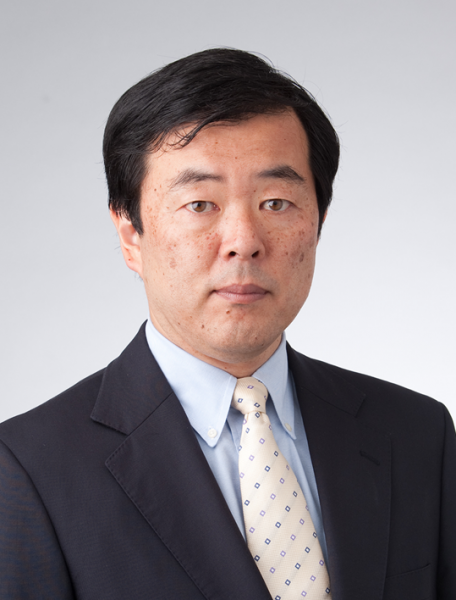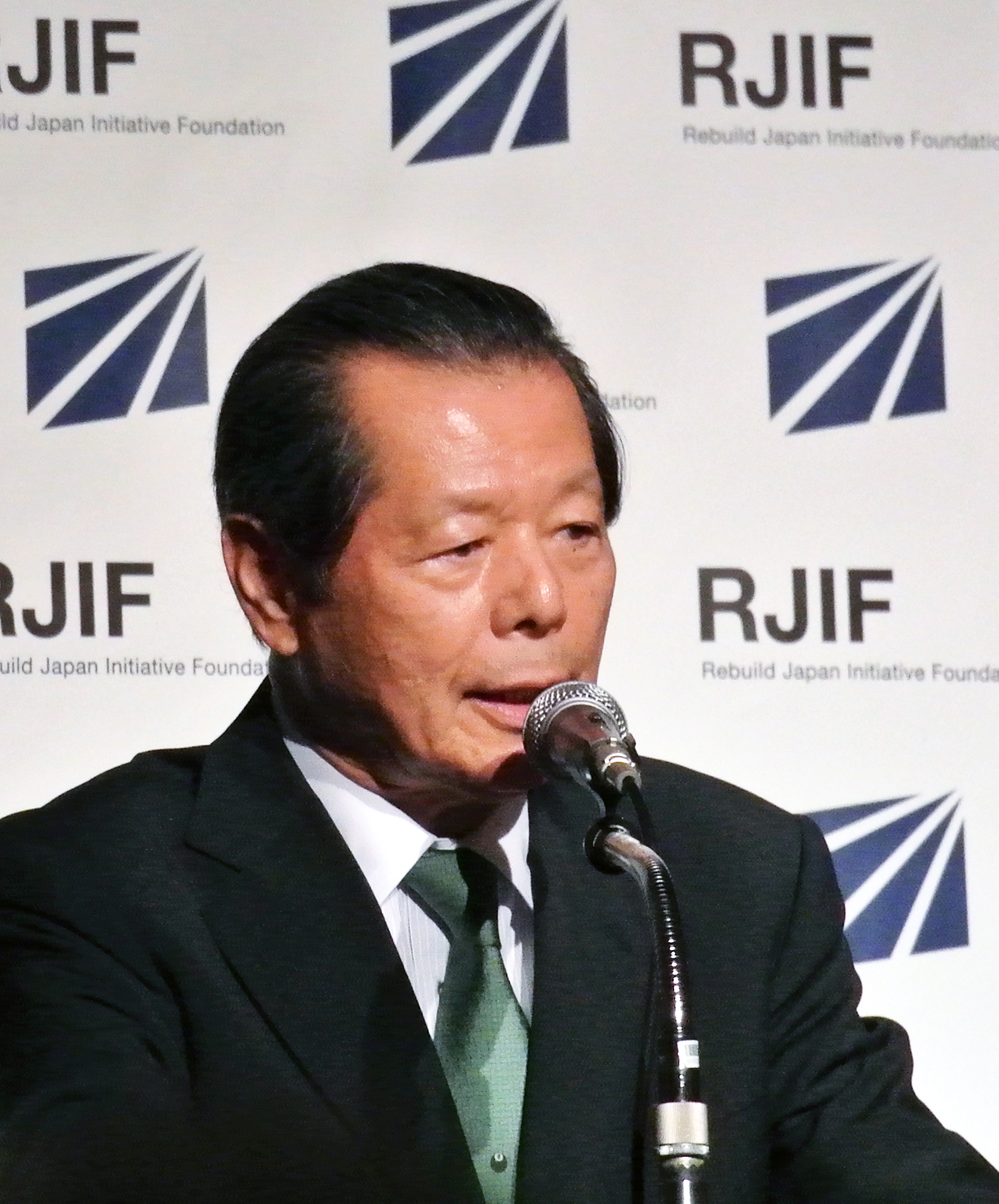When Idols Shone BrightlyDevelopment of Japan, the Idol Nation, and the Trajectory of Idols
Japan, the Nation of the Idol

SAKAI Masayoshi, Visiting Researcher, Center for Global Communications, International University of Japan
In 2013, the NHK morning drama Amachan and the TBS drama Hanzawa Naoki both proved hugely popular. People said that the programs symbolized the resurgence of the television drama. The Internet was instrumental in winning both dramas a lot of fans and both stories have proved durable with spin-off programs and events still in the pipeline.
Amachan is the story of three generations of girls who want to be idols. Amano Natsu was something of a local idol during the period of rapid economic growth and a fan of Hashi Yukio, one of the very early idols. Amano Haruko moved to Tokyo in the 1980s to try to make it as an idol. Amano Aki ends up in Tokyo after a strange turn of events and tries to make it as an idol during the idol boom in 2009.
The striking thing here is that the drama uses the “idol” as the device for telling the history of postwar Japan and the subsequent period of rapid economic growth, the increasingly sophisticated consumerism and the economic bubble, and then the twenty lost years.
Every now and then people start talking about an idol boom. However, if we look back with a level head, with the exception of the 1990s, there have not been ten years in a row without an idol boom. If so, Japan has been a nation of the idol all along.
When Did the Idol Emerge?
There are various theories about when and how the idol emerged. In Japan, the word “idol” appeared in the early 1960s with the French film Cherchez l’idole. The phenomenon of girl singers who were hugely popular with their own generation can be traced back to Yoshinaga Sayuri, an adolescent star in the 1960s, the prewar Takarazuka Revue, or the popular theaters in the Meiji period (1868–1912). However, I think that the emergence of Minami Saori in 1971 is a fitting starting point for the age of the idol when teenage boy and girl singers conquered the mass media.
The seventeen-year-old Minami Saori, who came out of Okinawa before the islands reverted back to Japanese control, rose instantly to stardom with the song Junanasai (17 Years Old). At a time when Japan was finally putting the trauma of the defeat in the war behind it with the Tokyo Olympics in 1964 and the Osaka Expo in 1970, and amid a powerful movement to find a resolution to the issue of Okinawa, another symbol of the defeat, Minami Saori captured the hearts of consumers, particularly those who were young at the time, with her cheerful, neat appearance and the touch of foreignness about her (Cynthia was both her nickname and her baptismal name). The timing was such that her future husband, the photographer Shinoyama Kishin, has said that he thought the singer was the product of a national policy to improve the image of Okinawa ahead of the restoration to Japan.
Minami Saori went on to perform pop music, folk songs, ballads, and acoustic songs, and to grow into a nationally popular singer. At the same time, images of teenage singers, both boys and girls, were suddenly streaming across television screens. Koyanagi Rumiko, who sang songs with a touch of enka and moody ballads with a mature ambiance, Amachi Mari, who had a talent for love songs in bright pop tempos, and Minami Saori were referred as the “Sannin Musume” (the three girls). They were followed by Yamaguchi Momoe, Sakurada Junko and Mori Masako who formed the Hana no Chusan Trio, Asada Miyoko, Asaoka Megumi, the trio Candies with Ran (Ito Ran), Sue (Tanaka Yoshiko), and Miki (Fujimura Miki), and Pink Lady with Mii (known as Mie today) and Kei (Masuda Keiko).
Popular male singers were Nishikino Akira and the boy group Four Leaves. We must not forget Finger 5 from Okinawa, a mixed idol group of boys and girls, a rarity still today, who modeled themselves on the American pop group The Jackson 5.
The Idol as a Social Phenomenon
From the viewpoint of the history of the entertainment industry, the reason for the change was that stars were now created by television, not on the stage or in films.
The first of many audition programs, Suta tanjo! (A Star is Born), broadcast by the Nippon Television Network Corporation, popular song programs, and variety shows were all central to the development. Film could not imitate the ability of television to turn auditions into programs and to broadcast daily programs featuring performances by large numbers of successful star candidates. Idols were surely a product of television.
If they know how to do something, they can increase the supply. With the arrival of the full-fledged “age of the idol,” which lasted through the 1980s, idols flooded across television screens including Sakakibara Ikue, Ohba Kumiko, Ishino Mako, Kashiwabara Yoshie, Matsuda Seiko, Koizumi Kyoko, Nakamori Akina, Hayami Yu, Matsumoto Iyo, Okada Yukiko, Kikuchi Momoko and others. The boys included Go Hiromi, Saijo Hideki, and Noguchi Goro who were known as the Shin Gosanke (New Big Three), as well as Jo Michiru, Aizaki Shinya, Shibuya Teppei, the Tanokin Trio with Tahara Toshihiko, Kondo Masahiko, and Nomura Yoshio, the Shibugakitai, and the Shonentai, and so on.
The live farewell concert by Candies and Yamaguchi Momoe’s marriage and retirement from the stage reinforced the impression that idols were a social phenomenon.
The Candies made their debut in 1973. They were singers, but they also frequently appeared on variety shows and acted in comic roles in sketch comedies. They were enormously popular and created appeal by emphasizing characterization. In 1977, the girls announced that they were retiring from the music business with the famous phrase Futsu no onnanoko ni modoritai (We want to be ordinary girls again). In April the following year, they packed the Korakuen Stadium (currently Tokyo Dome) with 55,000 fans who had come to say farewell when they performed their final concert. This marked the first time for idols to do a live stadium concert and the spectacle provided overwhelming visual confirmation of the popularity of idols.
Then there is Yamaguchi Momoe. She made her debut in 1973 and established herself as “an inexperienced girl pushing herself to the limit to act like a cool beauty” by singing songs like Hitonatsu no keiken (An Experience One Summer), which were quite suggestive for someone so young. Yamaguchi soon became a driving force, not only in the idol industry, but in the entertainment world as a whole. In 1980, at the peak of her popularity, she suddenly announced that she was in a relationship with the actor Miura Tomokazu, married, and retired from the music business. Ahead of her retirement, she released her last singles Sayonara no mukogawa (31st single) and Ichie (32nd). She also published Aoi Toki, her autobiography, and held a farewell concert at Nippon Budokan. The fever pitch in the Japanese television and entertainment industry was definitely a social phenomenon with nearly all key broadcasters producing special programs about her retirement.
There had been earlier examples of performers with the same idol characteristics as the “Sannin Musume (literally three girls),” including Misora Hibari, but most of them were mature actresses in their twenties such as Hara Setsuko, Kuga Yoshiko, and Takamine Hideko who were an offshoot of the entertainment world. However, the Japanese entertainment world had suddenly started to revolve around the idol. It was the birth of the society that admires idols, the “nation of the idol”
Why Is Inexperience, or Inperfection, Supported?
The idol was actua lly an oddity as a performer. Unlike the stars of the film era who attracted fans with their chiseled features and talent as singers and actors, the idols were not very good at singing despite being singers. Neither were they very good actors despite appearing in television dramas and films. The girls were hardly beauties and the boys were not particularly good-looking.
Incidentally, this lack of experience as entertainers is an important clue when considering the phenomenon of the idol. The reason is that it suggests a U-turn in the relationship between stars and their fans.
I am sure that anyone like me who was a fan and lived through the age of the idols that began in the 1970s will remember discussing their idols with friends at school. The discussions would turn into competitions with friends who were fans of other idols, and then develop into a game of competing on rankings in popular singing programs, the top ten programs in particular. We thought that if we wrote postcards with requests and sent them to the programs, our efforts would have some impact on the ranking of the idol. If the idol didn’t do well, we would talk like producers, blaming a bad song, or the costumes, and talk future strategy of her or him.
I have classified this kind of amusement into three categories, the discovery game, the support game, and the promotion game. My hypothesis is that fans are not trying to find nice songs or someone attractive of the opposite sex, but they are in pursuit of the process of turning the idol they support into a star, and buying their records is only the means to do so. If this is true, it would explain the phenomenon in the 1970s. It would also explain why the industry as a whole avoided “boring” entertainers who were too beautiful, or too good at acting or singing.
In 1985, a big project was launched to create idols on a precise model that may have changed consumer behavior. It was a project that took the rule of thumb that “it is easy to feel close to those who are not that good” to the next level. It was Onyanko Club.
Onyanko Club Unmasked Everything
By the early 1980s, the idol phenomenon had spread to amateurs and we had the “joshi daisei” (female university students) boom where ordinary girls without any training would appear in the mass media. The Fuji TV program, All Night Fuji, was a product of this concept, as was All Nighters, an offshoot of All Night Fuji that featured idols from the show. Shifting the focus from university students to high school students produced the Yuyake Nyannyan television show and Onyanko Club.
With Onyanko Club came several breakthroughs. First of all, they smashed the pretense that no matter how poor their skills, idols were still pros. Onyanko Club used television as the stage to make a virtue out of amateur club activities for high school girls. In addition, the club activity model inflated the number of members to nearly twenty. Previous idol groups had consisted of two or three members, or five at the very most, so the large scale made a strong impact (even though Onyanko Club is a running joke now when AKB is a household name). Onyanko Club was also the first idol group to introduce the “graduation” system, which made sure the group always retained its amateurish feel by changing the member configuration. All of this reinforced the discovery game, the support game, and the promotion game among the fans.
As many Japanese people in the age would remember, the result was that this amateur group with its imperfections and fun characterization succeeded in pushing professional idols (including professional singers) aside and created a huge boom by winning the hearts of lots of young people. The success of Onyanko Club verified the theory that idols are attractive because they are not perfect.
But the group was only active for the relatively short time of two and a half years. The reasons are still discussed today. When some of the group members turned pro and joined to several management company but others were still amateurs, the mix of members may have made overall group management difficult. Or perhaps there were simply too many members and they tired of the project. Or perhaps the popularity vanished because the Yuyake Nyannyan program content and the Onyanko Club activities had become stereotypes and lost out in the popularity stakes. However, I would like to point to a major change in the mood of the times that occurred between the late 1980s and the 1990s.
The 1990s––A Game Changer
The changes that occurred during the economic bubble and into the 1990s have been analyzed from many viewpoints, but from the perspective of the entertainment industry, there was a significant drop in appreciation of “imperfection.” Instead, this was an era when appreciation of “excellence” was on the rise. Idols were replaced with “young beauties,” who were talked about for their looks, or “artists,” a word that suggests the fine arts or people with outstanding talent.
For the idols of the time, there was an inevitability about the change. The popularity of idols was transient to begin with since the more career experience they had the less suitable they were as idols, so the only choice was to join the ranks of the talented. The Japanese rock and folk music movement called “New music,” the extreme opposite of idol music at the time, influenced styles and provided tunes, and idols also wrote their own lyrics. The result was that the two aspects started to blend together.
This is apparent in the career of Matsuda Seiko. At first, people made fun of her for being a “burikko” (coy idle) but her bright and innocent character enjoyed high popularity. Her relationship with Go Hiromi even earned her the image of a successor to Yamaguchi Momoe, but when she was at the height of her popularity as an idol, Matsuda Seiko made a complete about-turn, split up with Go Hiromi, and married Kanda Masaki. After the wedding, she turned herself into a strong woman who was carving out her own path, showing every intention of staying in the entertainment industry. She emphasized her innate skills as a singer and transformed herself into a grown-up talented vocalist. Her female fans were supportive and Matsuda Seiko became an icon for the strong woman.
I believe that these changes were also guided by changing world views among consumers at the time.
The discovery game, the support game, and the promotion game that had started in the 1970s were the accessories of increasingly sophisticated consumption. The postwar Japanese economy matured in the 1970s. Amid the multilayered pyramid structure set up by corporations ranging in size from major corporations to small and medium-sized cottage industries, the seniority system, lifelong employment, and other labor practices, there was no longer any hope of getting past the results of academic competition to rise through the social classes. When the producer has no dreams, the pleasure of choice as a consumer becomes relatively significant.
The appearance of idol is often expressed as “kawaii” (cute) because of its imperfection, but Yomota Inuhiko argues that the essence of “kawaii” is the sensation that the observer can possibly control the subject. We play the game of adoring cute idols because we cannot make ourselves talented and join the winning side. In short, the idol phenomenon is an escape act to get away from competing for exams, for employment, for career progression in the company. At most, there may have been an element of taking a breather through fun and games.
If so, when Japan was (or thought it was) at the apex of the world during the bubble economy and society made the shift toward dynamic development following the privatization of government-run enterprise, deregulation, and market competition, the resurgence of the dream to succeed in business must have reduced the significance of consuming imperfection. It is only natural that the stronger and more attractive are ap preciated in the age of market competition.
Therefore, Amuro Namie or SPEED, who were the closest thing to the idols of the 1980s, did not refer to themselves as idols. Of course, the word idol was still in use, but it was reduced to a designation for supporting roles such as female announcers or young models appearing on magazines. It seemed that the power of the idol to fascinate the nation had come to an end.
The Revival of the Idol
Explained like this, it is only natural to conclude that the age of the idol is over and the age of the talented star is here, since we are still in the age of market competition. However, as you all know, the idol has made a spectacular comeback. So, what on earth happened?
First I have to point out that the idols of today are quite different from those of the 1970s and 1980s. The revival of the idol started with Morning Musume in 1997, followed by AKB48 in 2005, and Momoiro Clover Z in 2008 (Momoiro Clover at the time). They are all group idols with many years of training behind them. The girls have struggled to make their way up the career ladder in ways that are incredibly creative.
Morning Musume are the “accomplished idols” who have made use of their skills as dancers and singers. This probably stems from their producer Tsunku who studied the short lifespan of Onyanko Club and concluded that the reason for their demise was the overly amateurish skill level. Even though Morning Musume have retained the imperfections of the idol in their demeanor and characterizations, they aim for authenticity as far as their accomplishments go. Even after the boom ran its course in the early 2000s, they continued to work and to improve their skills with the support of diehard fans. Today, they are again getting attention in the mass media for attracting female fans who admire them for being strong women, and overseas fans who are interested in authenticity.
AKB48 are the “competing idols” who have thrown open the competition between members to the fans as part of the program. Today, competition between idols and fans is no longer visible because there are no top ten programs and the Internet space was segmented into many island universes where people only have contact with the likeminded. The “AKB general elections” provide fans and members with so valuable environment in which they come together for the popular competition, that the fans can enjoy the games of discovery, support, and promotion to their hearts’ content. To reinforce the element of competition, each team is assigned a regional identity and the scale of the competition is expanded by increasing the number of teams. The competition has gained momentum, even crossing national borders, starting from AKB48 (Tokyo) and spreading to SKE 48 (Nagoya), NMB48 (Osaka), HKT 48 (Fukuoka), JKT48 (Jakarta), SNH48 (Shanghai). NGT48 (Niigata) is planned to launch during this year. The scale of the idol group is huge, counting four hundred members, nearly five hundred if you add in the rival group Nogisaka46.
Momoiro Clover Z are the “encouraging idols” who aim to restore a smile on the faces of their fans. Although they have no eye-catching management method unkile Morning Musume and AKB48, Momoiro Clover Z are a well-choreographed team of five permanent members. Their characterizations are impressed and reinforced not at all like idols, in the unconventional way that they appeared on the stage of pro-wrestling with painted face and gas-shooting performance, and so on. Their story is about working hard without any concern for appearance. It reinforces the messages in their songs about supporting and expressing affection for people who are sad and lonely, or encouraging those who have lost sight of the meaning of work to take pride in what they do, or telling people who feel like they are crushed by the bitterness of life that crying is okay. They have captured a broad fan base including a generation of older men.
These three groups are not the only ones. There are countless idol groups polishing their acts in the footsteps of Morning Musume, who went from the losing side in audition programs to reach the top, AKB48, who catapulted to fame from a small theater in Akihabara, and Momoiro Clover Z, who have progressed from performing on the street in Yoyogi to Kohaku Uta Gassen, the NHK New Year Concert. BABYMETAL, who have astounded the international heavy metal scene, enjoyed extensive press coverage last year. There are also local idol groups working on a small scale around the country and looking for the big break. There are some success stories including Hashimoto Kanna, a member of the Rev. from DVL idol group, who became famous all over Japan thanks to a single photograph from Fukuoka, and Perfume who took the leap from Hiroshima to the national stage, and then abroad.
The Fascination of Today’s Idols––A Mosaic of Imperfection and Authenticity
There are similarities between these “modern idols.” They share a strong sense of self awareness, and their struggle is about aiming for some kind of authenticity. They also lay bare their struggles before the fans. This is completely different from the idols of the past, the young boys and girls who innocently sang their hearts out in settings created by the media.
For the entertainment industry, the development of IT and the proliferation of the Internet means that it is no longer possible to do a basic screening before the debut. As a result, today’s idols inevitably have the rough and ready image of “market competition” about them, and their performances (not only the singing and dancing, but also their demeanor) have developed some authenticity.
However, it is important to note that this does not take away from the popularity of the idols, rather it is the source of their popularity. In short, the key point is that there has been a change in the image demanded of the idol, and this change has happened in the fan base.
The fact that the acomplished idols, or competing idols, or encouraging idols is demanded indicates fans want to master something, or they want to compete, or they want to be encouraged. From this perspective, the fans of idols are neither averting their eyes from “market competition,” nor giving up competition to shut themselves away in the aloofness of being consumers. Rather, the fans are opening their eyes and trying to face up to the reality of competition, by choosing the idols that now symbolize “competition”. This is perhaps the key point to explain the change in the idols.
But there is also a counterargument. If the fans are trying to accept competition, straightforward admiration for “excellence” similar to the 1990s would be the natural response. But, although the girl stars and the South Korean stars like KARA, who stride into view looking like postwar film stars with their chiseled features and long slender limbs, are popular only with fans of the same sex and with older men in Japan, they are not popular with young men. This indicates that, obviously, the simple and apparent superiority cannot satisfy Japanese young men.
On the other hand, idols are able to convey the reality of competition to the fans because of the image of imperfection. Finding themselves thrust into unwanted competition, the girls are perhaps found worthy because they continue to struggle even if they are not on the winning team and even though they are as imperfect as we are.
It is this quality of the modern idols that make the live concert a chance in which fans can feel by sight the existence of ones that are struggling in the “competition”. There they share same support style, that developed in the 1990s when extinction loomed for idols. Those made the live stage a device for fans to overcome solitude in the daily “competition”.
The Trajectory of Japanese Evolution Superimposed on the Evolution of Idols
This explanation may not resonate much with policymakers or successful people.
The reinforcement of “market competition” was originally a kind of restructuring plan for Japan. The premise for the decision was that Japan had graduated from the stage of catching up to other nations, but unless the country broke out of the ossification suggested by words such as “lifelong employment” and “keiretsu” to become a leading nation, it would not be able to support prosperity. Theory of Economy taught Japanese leaders new idealized image of those who could, aspired for success, work hard and produce innovation to achieve success amid market competition, instead of those who cooperated with each other to achieve a success of a social groups as a whole. That could be the same as in Europe and the United States.
However, even if this is true, reality did not develop along the lines of the ideal. My interpretation of the modern idol suggests that amid the reality of “market competition” people turned their back on aiming for the stratospheric heights of the glittering success stories. Instead, we have the image of the Japanese who struggle to inspire themselves to somehow survive in the market.
One can, of course, criticize this as a lack of confidence or incompetence. However, I think we should appreciate that the Japanese broke out of a background of excess stability, struggled to accept “market competition,” and then dealt with a new reality where each individual had to struggle to the best of their ability.
In recent years, many people are pointing to a shift to the right in Japanese society. Setting aside the reasons for such assessments, the fear is that individuals who are lacking in confidence are not able to support their identity by projecting themselves on the nation. However, fans who can struggle through daily life thanks to handshake sessions with the stars, or pseudo-communication with idols on the Internet, or the illusory fan community, in other words, fans who are supported by their idols in their daily struggles, do not need a statism, or a religion like Aum Shinrikyo, or a political student movement that once has concluded the Japanese Red Army.
Can we not appreciate idols as a kind of social infrastructure created by Japanese society to support the mindset of people and to help ordinary people to peacefully survive the bitter reality of the market economy. Is it the imagination, or does Japan, the nation of the idol, with a way of life supported by idols, not seem rather smart and flexible?
Translated from “Tokushu –Aidoru ga Kagayaiteitakoro – Aidoru-kokka Nippon no Seicho to Aidoru no Kiseki (Feature Article: When Idols Shone Brightly – Development of Japan, the Idol Nation, and the Trajectory of Idols),” Chuokoron, May 2015, pp. 142–151. (Courtesy of Chuo Koron Shinsha) [May 2015]




